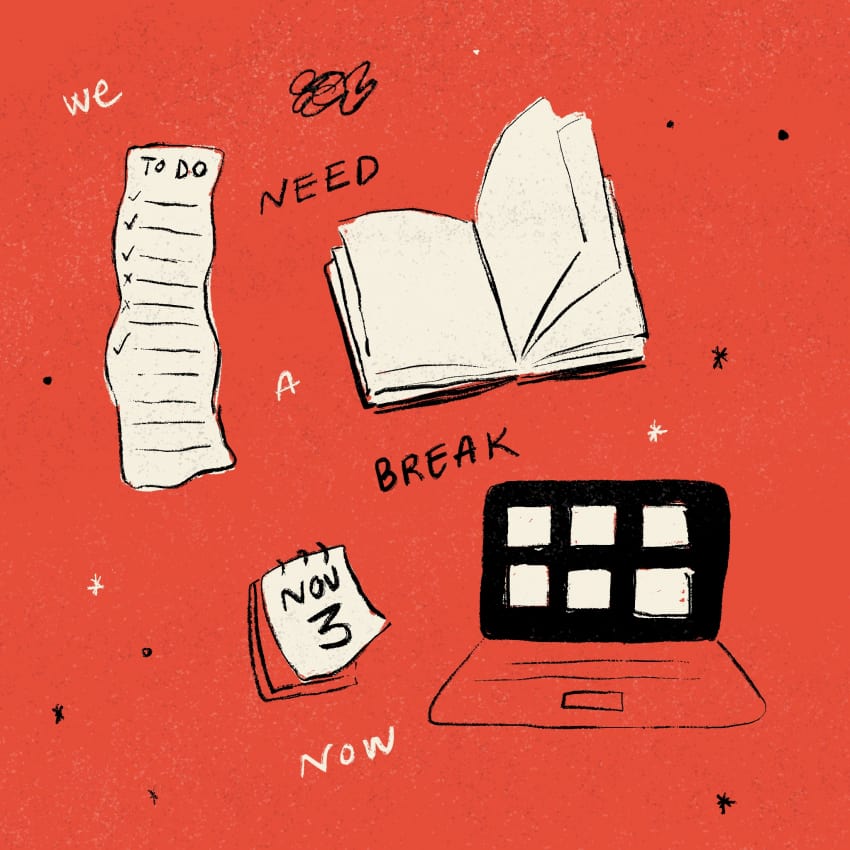
This week, after experiencing another heart-attack-inducing technical error on a midterm, I had yet another reason to say as I do every year around this time — we need a midterm break now.
The timing of our university’s midterm break, from Nov. 9 to 14, has always intrigued me.
It comes 10 weeks into the 14-week fall semester, meaning it hardly lives up to its name of falling in the middle of the semester. Coming back from the break, it also means there are just three short weeks before finals arrive.
The point of the fall midterm break is to take a moment to breathe, catch up on school work, prepare for upcoming exams and hopefully spend some time with those we love.
Does having a break in early November really accomplish that though?
By the time reading week rolls around students have completed midterms and are already on the last leg of the course.
Speaking from experience, I’m always buried knee-deep in class content from the weeks after midterms by that point. While I desperately need a pause — a moment to just breathe — I spend most of the break trying to catch up and also begin preparing for upcoming finals.
By November, most of the semester has passed and it can be harder for students to turn around their marks in classes.
So while the break is somewhat helpful in providing time to catch up on courses, I don’t think its placement truly provides students with the opportunity to relax, prepare and reflect.
This is why I propose — and I’m not the first and won’t be the last — that we move the break up a few weeks to right after midterms.
Without having to think of impending exams or having to catch up on the mountain of work accumulating after midterms, this would allow for everyone, staff and students alike, to take a breath.
This means students can, guilt free, spend time doing what they love. This could be a dinner with the family, a hangout with friends or picking up a hobby that usually gets set aside and ignored during the school week.
Having just completed midterms, the break could allow for students to reflect on how the first half of the semester went. What went well? What could be improved and how? Without giving ourselves the time and mental space to ask these important questions, we risk losing out on content learning and skill development.
Lastly, with half of the semester in our rearview mirror, and applying the lessons learnt through reflection, students can better prepare for the second half of the semester. This can take the form of doing textbook readings, looking up laboratory techniques or brainstorming ideas for term papers.
Regardless of how you end up using your time, moving the timing of the break would provide an incentive for students to relax, reflect and prepare. It would give us all a renewed enthusiasm and a strong foundation to tackle the second part of the semester, which would reduce burnout in students at the end of the semester.
I’m well aware that moving the midterm break to a spot in the semester that is more appropriate to its name may not work for everyone — but therein lies the problem. One break is not going to solve university students’ mental health and well-being problems.
For that, we need continued and consistent support year round.
But it’s high time we have a serious discussion on whether the current positioning of the midterm break is helping anymore. And to consider moving it up a few weeks to provide students a real chance to do what a midterm break is actually intended for: relax, reflect and prepare.
—
Vaidehee Lanke | Opinions Editor
Graphic: Anh Phan | Design Editor